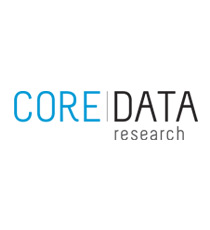The persistently low interest rate environment, coupled with rising house prices, has had an interesting impact on the household debt position of Australians.
While presenting some insights from CoreData’s latest Investor Sentiment Index (ISI) report recently, I was asked a question about the record high level of cash and deposits among Australians at the moment – $976.7 billion at last count.
“Are those who are parking cash doing it to reduce their debt exposure?”, I was asked. In other words, is this penchant for cash merely a debt reduction strategy?
While there’s no doubt that pockets of Australia’s mass affluent and high net worth investors are using the low rate environment to get ahead on their mortgage, a cursory look at the latest Australian Bureau of Statistics (ABS) data suggests there are some other things at work.
Low rates should in theory aid mortgagors’ ability to pay down their loan quicker, but they are instead boosting borrowing and pushing house prices skywards (particularly in Sydney and Melbourne).
Cash stockpiling isn’t helping to reduce debt exposure; rather, levels of household debt continue to rise.
The chart above indicates that the ratio between savings and loans and placements has been increasing since the global financial crisis. While loans and placements doesn’t specifically refer to property; the ABS Survey of Income and Housing suggests a significant portion of growth in loans over this period was a direct result of an increase in property loans.
With most of Australians’ $8.62 trillion household net worth (as at end of December 2015) held in property, a property correction such as that currently occurring in WA, combined with higher interest rates, could hit households hard.
According to the ABS, household residential property assets alone totalled $5.6 trillion in the December quarter, while the mortgage debt to residential property ratio rose to 28.4% from 28.1% the previous quarter – the thirteenth consecutive quarter of growth.
The latest data suggests that the growth of mortgage debt outpaced the value of residential real estate owned by households – and the extent to which household residential real estate assets are geared.
Here are a few indicators that mortgage stress is just an interest rate rise (or three) away:
- The ratio of household debt to disposable income has almost tripled since 1988, from 64% to 185%.
- More than 90% of Australian household debt is spent on building wealth or buying a home to live in, rather than purchasing consumables.
- In the past 20 years, private debt has doubled to about 160% of GDP. The stock of business credit ($852 billion in April 2016) has dropped from half to a third of the total lending.
Increases in private debt to GDP is sustainable while asset prices are rising and interest rates low or falling.
But when rates do rise, repayments will become less manageable and many households may find themselves under mortgage stress.
